- Home
- Robert Silverberg
Earth Is The Strangest Planet Page 14
Earth Is The Strangest Planet Read online
Page 14
There were more than when I first found them, the week before, just after the freshet. The creek had cut away a sort of alcove in the bank, eddying back in a clear, deep pool with a long, sleek swell of current over the topmost log. The water was eating hungrily at the bank and at the stiff, blue clay that underlay it, and little trickles and sudden slides of gravel were cascading into the pool.
The water was cold—damned cold—but Bates went in up to his waist without hesitation. That’s the way he is. I’ve seen him squat for hours in the blazing sun, bareheaded, dusting out a burial so that he could get plenty of detail in his photographs. Once in the middle of February, when he came on half a pot exposed in a cut bank, he wasted a whole day and ruined a good ax hacking out a huge block of the frozen mud in which it was embedded, only to have the whole thing crumble to bits when he tried to thaw it out. And he’d do anything for tree rings.
Bates is a dendrochronologist—a tree-ring expert. He dates things by them, as easily—or so it seems to me—as we would look up a year in the World Almanac. He was originally just the common, back-pasture variety of amateur archaeologist, a good one, to be sure, with quite an enviable reputation in the circles where it counted, but nothing to startle any paper into giving him a double-page spread in one of its Sunday magazine sections.
Then he happened to run across a site with a particularly ungodly mix-up of culture traces, and got it into his head that the only way to solve the thing was to date it. Obviously tree rings were the answer: everyone who reads the newspapers knows all about how they show what years were wet and which were dry, and how Professor Douglass and his crew have dated hundreds of ruins by them in the Southwest.
The trouble was that nothing that they had worked out there was any good at all to him. If there is any place less like the Arizona desert than the foothills of the Adirondacks, I have yet to see it. Anyway, he started from scratch to work out a calendar of his own.
He did it, too. He dated everything in sight that had wood in it—old houses, covered bridges, antiquated horse troughs, Indian stockades—and before long he was far out of sight in the depths of prehistoric times, grubbing joyously among nubbins of charcoal and scraps of rotten wood, farther back than anyone had ever thought it possible to go.
He tried linking in the layers of mud laid down in the bottoms of ponds, and the sand in river deltas. He had half a dozen different calendars and chunks of calendars ranging over thousands of years, with gaps between them in which a civilization as big as Colonel Churchward’s Mu could have risen and been lost.
He was particularly fond of the ones that hovered around the fringes of glacial times, when men were just beginning to amount to something in the world. That was why he grinned when he saw those logs.
There was a good twelve feet of gravel over them, and three or four feet of stiff blue boulder clay under that. They were embedded in clay as fossils are embedded in rock, and for the same reason. Hundreds of centuries ago they had lain, water-logged, in the mud at the bottom of some glacial lake. Silt covered them, washed down from the melting front of the great ice sheet that lay over half the world.
Year after year the layers of clay built up, thick in the warm years as the ice melted faster, then thinner and thinner as the great cold came again and the glacier crept southward over the continent. It heaped gravel and broken rock in long moraines over the frozen lake bottom. Finally it disappeared for good. The world grew warm again and new streams cut their way down through the debris left by the great ice.
Those logs had been trees in interglacial times, when apish men roamed over Europe and mastodons and mammoths wallowed in the swamps of the northern hemisphere. Their rings would record the changes in climate that brought the ice sheet creeping like slow death over the face of the planet. No wonder Bates grinned!
I had seen the ends of two logs protruding from the clay when I led a hike that way the Sunday before. The water was still high, and by now a dozen or more were uncovered.
Queerly enough, they were all very much of a size and lay side by side, all on the same level, just under the surface of the water. Gravel from the bank had drifted against their exposed ends, hiding them, and Bate’s plodding boots had muddied the pool below so that he couldn’t see the downstream face of the pile. But Bates isn’t one to wait. He unslung a short-handled shovel from his pack, waded out into the middle of the creek, and went to work.
In an hour’s time he had a dam and a channel that diverted the current along the opposite bank of the stream. The upper surface of the logs was high and dry, or drying, and he had hacked a long trough through the clay of the creek bottom which had lowered the level of the eddy pool by a good two feet.
He hunched down and studied the logs. They were soft and cheesy to the touch, and dark with age, like huge, uneven cylinders of black chocolate. Pines, probably. He hoped so, for pines had the most sensitive rings. He reached down and began to scoop the drifted gravel away from their ends. And then he yelled.
Those logs were cut by men!
They were cut by men—Heaven knows of what race or color—who lived with the hairy mammoth and the giant sloth before the ice came, twenty or thirty or forty thousand years ago! The ax marks were plain on the exposed wood. They weren’t beaver marks—he knew those by heart. A flint ax made them—a flint ax wielded two hundred centuries and more ago, not in New Mexico, or Colorado, or Wisconsin, but here, here, practically in his own back yard!
He went at the gravel like a terrier, with both hands, until he had uncovered the ends of six great logs, lying side by side in the blue clay. Then he cleared away a space beneath them with a trowel. He ran his fingers along their buttery underside—and sat back staring, goggling, utterly incredulous.
Those logs were notched to fit over the top of a crosspiece!
Bates is too good an archaeologist to go off half cocked. Before he left that night, he had uncovered one whole end of the thing, down to solid rock, and covered it up again to protect it from the force of the stream. He reenforced his dam and deepened the channel he had dug, until all but a thin trickle of water followed the other bank, with a solid dike of tamped clay and stone between. And when we arrived, long before dawn the next morning, he set us to work at once draining the pool.
There were three of us, counting Bates, and a fourth was on his way. He had no time to spare. The barometer and the weather maps both shouted “Storm!” and rain would ruin forever our chances of saving whatever had been buried in that ancient vault.
For vault it was—the oldest structure ever found that was raised by human hands. It was made entirely of huge, hewn logs, five feet square at the base and over twice as long, and it was set on a great, smoothed block of solid limestone.
We worked that day as I never want to work again. We dug away that twelve-foot gravel bank until it stood back a clear six feet on all sides of the vault. We cut into the clay and peeled it away in great, thick slabs, with Michaelson following every step. He was a notary, and a wizard with a camera, and if Mann should arrive too late we would have a sworn record that no investigating committee of bluenosed skeptics could argue away.
Mann flew. I had met him once, at a Rochester meeting of the Society for American Archaeology, where he was carrying on Parker’s enviable tradition as superhost to half the archaeologists in the country. Bates knew him well, and what was more, he knew Bates. No train was fast enough for an emergency like this one. The sun was barely an hour high when his plane bounced down into the pasture above the creek and he came stalking across to where we were working, his coattails flying and his white mane rumpled and tousled where he had been yanking it in his impatience.
Mann is sixty if he’s a day, but he dug too. He dug like a demon—we all did—but time went past like the whisk of a scared trout. The whole west was black, with fitful flares of lightning illumining the cavernous hollows of the clouds, and now and then a rumble of closer thunder.
Michaelson was swearing dismally as the light fad
ed and he had to give longer and longer exposures to his films, and Bates’s face was a savage mask. Heaven alone knew what was in that great log box, and if the storm broke, that knowledge would be kept through all eternity.
Night was on us before the last log was clear. Michael-son’s flares lighted the landscape weirdly as he photographed the vault, deep at the bottom of its muddy crater, with our haggard faces peering past its massive bulk. The limestone block on which it stood was pecked and polished by human hands, its edges roughly squared. That, at least, we could leave to study later. Nothing less than an earthquake would carry that away.
It was insanity to expose the wood as we had done. It was soft and sodden with water, and full of heavy, hard-packed clay. Heaven knows what kept it from collapsing before we were half done. But it was the only way. We had no time to do it carefully. The first raindrops spattered against our faces as Mann lifted a flare high above his white head and Bates and I seized the ends of one of the great roof logs. It felt like solid lead.
“Drop it!” Bates gasped. His teeth were set in his lower lip and there was a trickle of blood on his chin. “It doesn’t matter. We can’t wait.”
Log after log smashed into the pit below us. The top was cleared. A mass of the blue clay filled the vault, retaining the impression of the logs that had covered it. As we wrenched away the ends and sides, down to the level of our waists, I heard Michaelson’s camera whirring at my ear, recording every detail.
Mann’s hand fell on my shoulder. It was raining hard now, and little craters were puddling the wet clay. I thought of the little droplet marks that are found imprinted in the stone of fossil beaches, and somehow those lost ages seemed closer than ever before.
“There are only a few more flares,” Mann told me. “You’d better clear the interior. Use a trowel.”
Have you ever used a trowel on hard clay? Layer after layer we peeled off, slowly, laboriously, a chunk at a time, until my back and arms and my tortured wrists screamed for respite. Down—down—we went, three trowels delving like mad, and Michaelson below us, swinging an ax, hacking the logs into sections small enough to carry safely to the field above.
At last a bare six inches separated us from the remaining logs. Mann was in the middle, his sleeves rolled to the elbows, his gnarled old arms darting expertly, shaving the clay away in tiny flakes. Suddenly something flashed white under his trowel.
We stood frozen, staring, at his cry. Michaelson came climbing out of the darkness behind me, clutching at my arm as he balanced at my side. Windy gusts of rain swept across the wet clay before us, eating it away, enlarging that spot of glistening white.
The flare went out. I heard Bates swear, heard him striking match after match, heard them splutter out. One caught. All his body was warped over it, shielding it from the wind and driving rain. Its feeble flame lighted his clay-streaked face and Mann’s hand, thrusting the flare toward him. Then the bald, white light blazed in our faces again, and Michaelson’s cameras were whirring, clicking, whirring at my side.
With numbed, blue fingers Mann scooped away the clay, working it down to an even level. A second patch of white appeared, close beside the first. No one spoke as his bony fingers ate away the clay, deeper and deeper, aided by the pelting rain. Our breathing sounded harsh and strange. I saw Bates’s face, opposite me, and there was something indescribable in it, in his glittering eyes.
Mann’s plying fingers stopped and his bent back straightened as he, too, stared into Bates’s face. And then it was as though some wizard’s screen were snatched away from before me. I saw what I had not seen before—what, somehow, my brain had refused to comprehend.
Thrust up from the hard, blue clay were the two white mounds of a woman’s breasts!
It was impossible! We knew—we had proof—that that vault of flint-hewn logs had lain under tons of earth for tens of thousands of years. No human flesh had ever endured so long—could ever endure so long.
It was impossible!
But it was true!
I touched the smooth, white flesh. It was hard, firm, and oddly dry—almost with warmth of its own. It was not like dead flesh, nor was it stone—a statue. I heard Bates’s hoarse voice, whispering: “We must uncover it.”
And Mann: “Yes, Yes.”
Under their trowels, under their digging fingers, the white flesh grew and grew. Twice they stopped, impatient, while we pried away more logs and hacked at the clay with frantic shovels, levelling it down, carving gutters to carry away the teeming rain that poured down over that glistening white flesh, washing it clean, revealing it to our hungry eyes.
She lay on a low table of hewn stone, smoothed like the great outer block. Her eyes were closed, and her full lips, and her slim white arms lay straight at her sides. Her hair was piled in a tumbled mound beneath her head and flowed down in two great, golden masses over her shoulders, gleaming like spun metal through the clotted blue clay. She was beautiful. And—she was dead.
Mann knows races as he knows the faces and voices of friends, but he could not place her. There was never a race like that in recorded history, nor in the legends of men before history. In her high cheeks, her narrow eyes, her slightly flattened nostrils were Mongol traces, but that slim white body with its glory of golden hair was not Mongol. Her long straight limbs and delicate, tapered fingers were not Mongol. By no fantasy of the imagination could she be identified with the yellow race.
The rain was beating like icy flails upon our backs. Trees in the darkness were tortured by the wind, and behind its dike of clay the tumult of the raging stream was rising to a sullen, brooding growl. The glare of the torch fell in a pool of light about us, its dim edges glinting from tossing wave tops, lipping higher than our heads at the very summit of the dike. Gullies were eating their way into the broken clay and murky rivulets streamed through them, eating at the soft earth, crumbling it away.
Mann’s voice was cracked and shrill over the clamor of the storm. His bare arm stretched toward the leaping wave crests, and words drifted to me on gusts of the wind.
“Get her away—the plane—before it breaks. No time— hurry! Hurry, man!”
Bates was on his knees in the clay, pushing his fingers under her white shoulders. His eyes turned to me and I understood. My hands gripped her ankles, smooth and glistening—wet, yet somehow dry—warm and strangely dry, and harder than flesh should be. We lifted her, stiff, like a statue, between us, and she was not heavier than a girl would be.
We held her high, scrambling down from the great stone into the pit, the muddy water swirling around our thighs, the soft clay underfoot sucking and slipping. Painfully, clawing for purchase in the sliding gravel, we worked our way up the steep side of the crater, out of the light of the flare, into the darkness.
We laid her on the cropped, wet grass of the pasture. Bates ran back and stood shouting down at the others where they crouched in the pit, searching the clay for ornaments, offerings—anything that might have been placed with the body. I saw his lean arm, silhouetted against the light of the flare, pointing upstream, and it seemed to me that there was a deeper, uglier note in the shout of the savage waters.
Barely in time, Mann’s streaming mane appeared over the rim of the pit, his hand seized Bates’s, and he scrambled out, kneeling to reach for the cameras. After him came Michaelson, dropping the flare to fling himself over the pit edge just as the freed waters of the creek smashed against the gravel cliff beneath him.
Then we were standing in rain-swept darkness while Michaelson fumbled with matches and the flare, were stumbling across the uneven ground toward the plane, carrying that still, white form that should not, could not logically exist—a woman older than the very hills above our heads!
All that night we crouched in the lee of the plane. By the time the first wan light began to creep over the sodden landscape, Mann decided that it was safe to take off. The ship would not carry more than two.
We helped him load that glorious, rigid form into the cockpit and
stood in a huddled group as he taxied slowly up the bumpy field, swung around, and came roaring down toward us. Somehow the plane gained speed; somehow he lifted it, mud from its dripping wheels lashing our upturned faces, and then we were standing alone in the cold, wet morning, with only incredible memories to bear witness to what had happened in the night.
There was no plane west that day. How we endured it as the train dawdled along through the interminable flatlands west of Syracuse, I cannot understand. I was half frantic with suspense and I knew that Bates must be even closer to nervous collapse, but we sat, stony-faced, staring out at the flat, gray landscape, waiting, while Michaelson fussed and fretted over his newest and largest camera. Waiting— for what, none of us knew—none of us could ever have guessed.
The museum car was at the station. Bates knew the driver, and what happened to traffic laws that night would bring the Rochester police to the brink of tears. Michaelson, white-faced, sat hugging his camera to him like a baby, but he never breathed a word of protest. None of us grudged anything that would save another minute.
The only lights in the big building were in Mann’s workroom. He looked up as we entered. Evidently he had not rested since he left us, sixteen hours before. A fling of his hand included the two men who stood with him behind the long table with its still, white, lovely form.
“Clements—Breen.”
The former was a man like a bearded mountain, younger than I am, the latter a man like a wizened elf, older than Mann. In that room we had the three greatest anthropologists in the United States—and a mystery that baffled them all.
Clements was slow of speech. His brow wrinkled and words began to boom at us, only to be snatched from his lips by Breen’s tempestuous babble.
“I have seen nothing like her, ever. There is—”
“—no precedent! Never! You, Bates—she’s yours. You found her. What do you say?”

 The Longest Way Home
The Longest Way Home Hawksbill Station
Hawksbill Station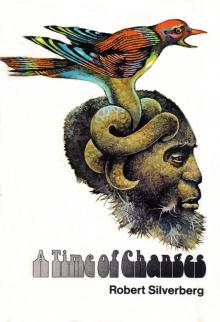 A Time of Changes
A Time of Changes This Way to the End Times: Classic Tales of the Apocalypse
This Way to the End Times: Classic Tales of the Apocalypse Beyond the Gate of Worlds
Beyond the Gate of Worlds Lord Valentine's Castle
Lord Valentine's Castle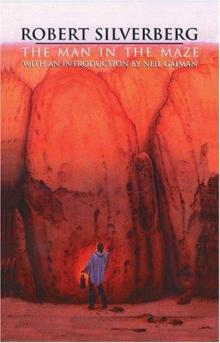 The Man in the Maze
The Man in the Maze Tales of Majipoor
Tales of Majipoor Time of the Great Freeze
Time of the Great Freeze The Collected Stories of Robert Silverberg, Volume 3: Something Wild Is Loose: 1969-72
The Collected Stories of Robert Silverberg, Volume 3: Something Wild Is Loose: 1969-72 Planet of Death
Planet of Death Trips: The Collected Stories of Robert Silverberg, Volume Four
Trips: The Collected Stories of Robert Silverberg, Volume Four In the Beginning: Tales From the Pulp Era
In the Beginning: Tales From the Pulp Era Hot Sky at Midnight
Hot Sky at Midnight Valentine Pontifex
Valentine Pontifex Up the Line
Up the Line Thorns
Thorns Amanda and the Alien
Amanda and the Alien Star of Gypsies
Star of Gypsies Nightwings
Nightwings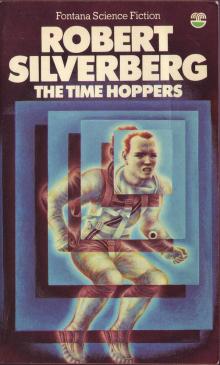 The Time Hoppers
The Time Hoppers Blood on the Mink
Blood on the Mink Dying Inside
Dying Inside The Last Song of Orpheus
The Last Song of Orpheus The King of Dreams
The King of Dreams The Stochastic Man
The Stochastic Man The Collected Stories of Robert Silverberg, Volume Seven: We Are for the Dark
The Collected Stories of Robert Silverberg, Volume Seven: We Are for the Dark The Millennium Express: The Collected Stories of Robert Silverberg, Volume Nine
The Millennium Express: The Collected Stories of Robert Silverberg, Volume Nine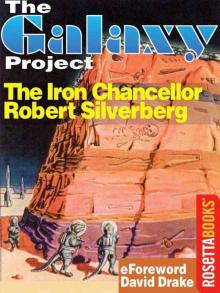 The Iron Chancellor
The Iron Chancellor Lord Prestimion
Lord Prestimion To Open the Sky
To Open the Sky The World Inside
The World Inside Chains of the Sea
Chains of the Sea The Collected Stories of Robert Silverberg, Volume Five: The Palace at Midnight
The Collected Stories of Robert Silverberg, Volume Five: The Palace at Midnight Postmark Ganymede
Postmark Ganymede The Second Trip
The Second Trip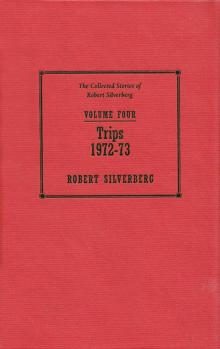 The Collected Stories of Robert Silverberg, Volume 4: Trips: 1972-73
The Collected Stories of Robert Silverberg, Volume 4: Trips: 1972-73 Son of Man
Son of Man Tom O'Bedlam
Tom O'Bedlam To the Land of the Living
To the Land of the Living To Be Continued: The Collected Stories of Robert Silverberg, Volume One
To Be Continued: The Collected Stories of Robert Silverberg, Volume One Shadrach in the Furnace
Shadrach in the Furnace The Chalice of Death: Three Novels of Mystery in Space
The Chalice of Death: Three Novels of Mystery in Space The Queen of Springtime
The Queen of Springtime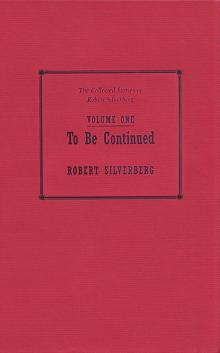 To Be Continued 1953-1958
To Be Continued 1953-1958 Legends
Legends Roma Eterna
Roma Eterna To Live Again
To Live Again At Winter's End
At Winter's End Needle in a Timestack
Needle in a Timestack To Live Again and the Second Trip: The Complete Novels
To Live Again and the Second Trip: The Complete Novels Lord of Darkness
Lord of Darkness The Mountains of Majipoor
The Mountains of Majipoor The World Outside
The World Outside The Alien Years
The Alien Years The Book of Skulls
The Book of Skulls The Face of the Waters
The Face of the Waters Gilgamesh the King
Gilgamesh the King The Collected Stories of Robert Silverberg, Volume 6: Multiples: 1983-87
The Collected Stories of Robert Silverberg, Volume 6: Multiples: 1983-87 The Happy Unfortunate
The Happy Unfortunate Three Survived
Three Survived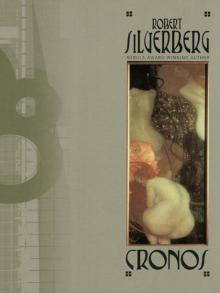 Cronos
Cronos Tower of Glass
Tower of Glass Legends II
Legends II The Planet Killers
The Planet Killers The Collected Stories of Robert Silverberg, Volume 2: To the Dark Star: 1962-69
The Collected Stories of Robert Silverberg, Volume 2: To the Dark Star: 1962-69 Downward to the Earth
Downward to the Earth Lord Valentine's Castle: Book One of the Majipoor Cycle
Lord Valentine's Castle: Book One of the Majipoor Cycle Hot Times in Magma City, 1990-95
Hot Times in Magma City, 1990-95 Hunt the Space-Witch! Seven Adventures in Time and Space
Hunt the Space-Witch! Seven Adventures in Time and Space Majipoor Chronicles
Majipoor Chronicles The Robert Silverberg Science Fiction Megapack(r)
The Robert Silverberg Science Fiction Megapack(r) Starman's Quest
Starman's Quest Car Sinister
Car Sinister Worlds of Maybe
Worlds of Maybe Fantasy The Best of 2001
Fantasy The Best of 2001 Revolt on Alpha C
Revolt on Alpha C Homefaring
Homefaring The Pardoner's Tale
The Pardoner's Tale Sailing to Byzantium - Six Novellas
Sailing to Byzantium - Six Novellas The Chalice of Death
The Chalice of Death Sundance
Sundance A Tip on a Turtle
A Tip on a Turtle Nebula Awards Showcase 2001: The Year's Best SF and Fantasy Chosen by the Science Fiction and Fantasy Writers of America
Nebula Awards Showcase 2001: The Year's Best SF and Fantasy Chosen by the Science Fiction and Fantasy Writers of America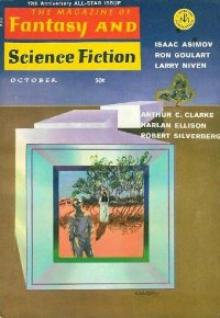 The Fangs of the Trees
The Fangs of the Trees The Palace at Midnight: The Collected Work of Robert Silverberg, Volume Five
The Palace at Midnight: The Collected Work of Robert Silverberg, Volume Five The Millennium Express - 1995-2009 - The Collected Stories of Robert Silverberg Volume Nine
The Millennium Express - 1995-2009 - The Collected Stories of Robert Silverberg Volume Nine Book of Skulls
Book of Skulls Passengers
Passengers Something Wild is Loose - 1969–72 - The Collected Stories of Robert Silverberg Volume Three
Something Wild is Loose - 1969–72 - The Collected Stories of Robert Silverberg Volume Three Multiples
Multiples Starborne
Starborne The Masks of Time
The Masks of Time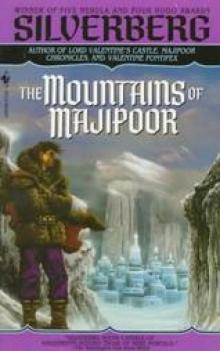 The Mountains of Majipoor m-8
The Mountains of Majipoor m-8 Multiples (1983-87)
Multiples (1983-87) Those Who Watch
Those Who Watch In the Beginning
In the Beginning Earth Is The Strangest Planet
Earth Is The Strangest Planet Collision Course
Collision Course Neutral Planet
Neutral Planet To the Dark Star - 1962–69 - The Collected Stories of Robert Silverberg Volume Two
To the Dark Star - 1962–69 - The Collected Stories of Robert Silverberg Volume Two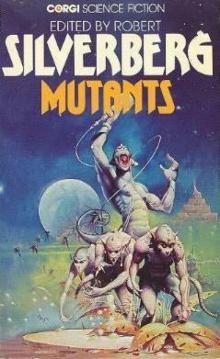 Mutants
Mutants Sailing to Byzantium
Sailing to Byzantium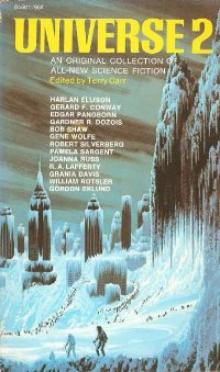 When We Went to See the End of the World
When We Went to See the End of the World Robert Silverberg The Science Fiction Hall Of Fame Volume One, 1929-1964
Robert Silverberg The Science Fiction Hall Of Fame Volume One, 1929-1964 To Be Continued - 1953–58 - The Collected Stories of Robert Silverberg Volume One
To Be Continued - 1953–58 - The Collected Stories of Robert Silverberg Volume One Valentine Pontifex m-3
Valentine Pontifex m-3 Gianni
Gianni Majipoor Chronicles m-2
Majipoor Chronicles m-2 We Are for the Dark (1987-90)
We Are for the Dark (1987-90) Waiting for the Earthquake
Waiting for the Earthquake Fantasy: The Best of 2001
Fantasy: The Best of 2001 How It Was When the Past Went Away
How It Was When the Past Went Away Beauty in the Night
Beauty in the Night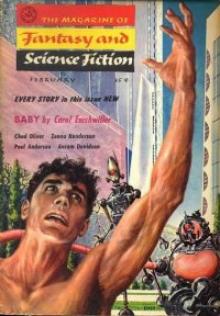 The Man Who Never Forgot
The Man Who Never Forgot The Book of Changes m-9
The Book of Changes m-9 Lord Valentine's Castle m-1
Lord Valentine's Castle m-1 This Way to the End Times
This Way to the End Times Queen of Springtime
Queen of Springtime Legends-Volume 3 Stories by the Masters of Modern Fantasy
Legends-Volume 3 Stories by the Masters of Modern Fantasy The Palace at Midnight - 1980–82 - The Collected Stories of Robert Silverberg Volume Five
The Palace at Midnight - 1980–82 - The Collected Stories of Robert Silverberg Volume Five Something Wild is Loose: The Collected Stories of Robert Silverberg, Volume Three
Something Wild is Loose: The Collected Stories of Robert Silverberg, Volume Three Multiples - 1983–87 - The Collected Stories of Robert Silverberg Volume Six
Multiples - 1983–87 - The Collected Stories of Robert Silverberg Volume Six Alaree
Alaree Three Survived: A Science Fiction Novel
Three Survived: A Science Fiction Novel Defenders of the Frontier
Defenders of the Frontier The New Springtime
The New Springtime We Are for the Dark - 1987–90 - The Collected Stories of Robert Silverberg Volume Seven
We Are for the Dark - 1987–90 - The Collected Stories of Robert Silverberg Volume Seven The Science Fiction Hall of Fame, Volume One 1929-1964--The Greatest Science Fiction Stories of All Time Chosen by the Members of the Science Fiction Writers of America
The Science Fiction Hall of Fame, Volume One 1929-1964--The Greatest Science Fiction Stories of All Time Chosen by the Members of the Science Fiction Writers of America Master Of Life And Death
Master Of Life And Death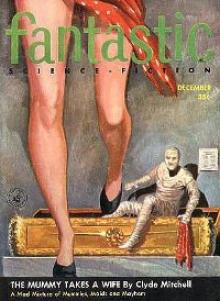 Choke Chain
Choke Chain Sorcerers of Majipoor m-4
Sorcerers of Majipoor m-4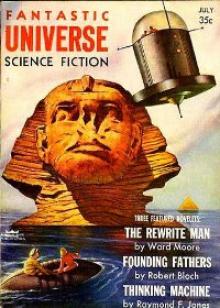 Absolutely Inflexible
Absolutely Inflexible Trips - 1962–73 - The Collected Stories of Robert Silverberg Volume Four
Trips - 1962–73 - The Collected Stories of Robert Silverberg Volume Four Hot Times in Magma City - 1990-95 - The Collected Stories of Robert Silverberg Volume Eight
Hot Times in Magma City - 1990-95 - The Collected Stories of Robert Silverberg Volume Eight Far Horizons
Far Horizons The Queen of Springtime ns-2
The Queen of Springtime ns-2 The Seventh Science Fiction Megapack
The Seventh Science Fiction Megapack Invaders From Earth
Invaders From Earth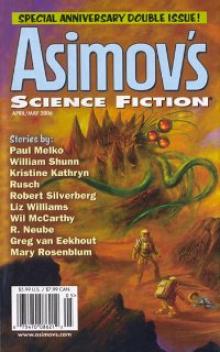 Hanosz Prime Goes To Old Earth
Hanosz Prime Goes To Old Earth The Macauley Circuit
The Macauley Circuit Science Fiction: The Best of 2001
Science Fiction: The Best of 2001 To the Dark Star: The Collected Stories of Robert Silverberg, Volume Two
To the Dark Star: The Collected Stories of Robert Silverberg, Volume Two Stochastic Man
Stochastic Man Legends: Stories By The Masters of Modern Fantasy
Legends: Stories By The Masters of Modern Fantasy To Live Again And The Second Trip
To Live Again And The Second Trip Flies
Flies The Silent Invaders
The Silent Invaders Ship-Sister, Star-Sister
Ship-Sister, Star-Sister